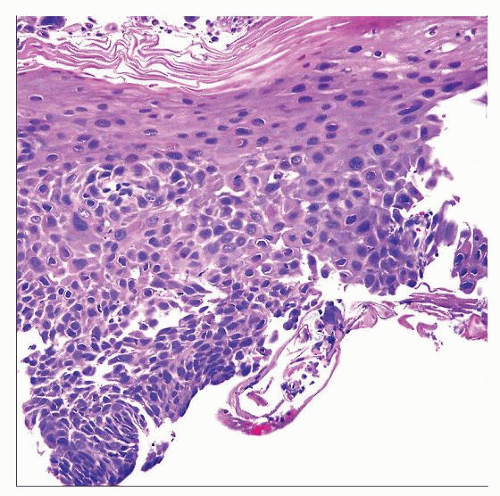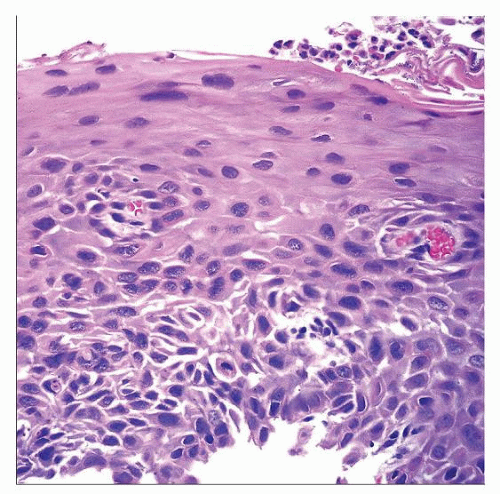Squamous Dysplasia
Elizabeth A. Montgomery, MD
Key Facts
Terminology
Precancerous squamous lesion that contains both architectural and cytologic abnormalities
Confined to basement membrane
Etiology/Pathogenesis
More common in African-Americans than Caucasians
USA is low-risk area for squamous cell carcinoma and squamous dysplasia
Microscopic Pathology
Low-grade dysplasia involves lower half of epithelium, with maturation in upper half
High-grade dysplasia involves more than 50% of epithelium
Architectural abnormalities
Disorganization of epithelium, loss of nuclear polarity, lack of surface maturation
 Hematoxylin & eosin shows squamous epithelial dysplasia. The epithelial changes extend into the upper half of the epithelium (high-grade dysplasia). |
TERMINOLOGY
Synonyms
Squamous intraepithelial neoplasia
Definitions
Precancerous squamous lesion
Confined by basement membrane
Dysplasia is usually graded as low or high grade
Most important and well-described risk factor for squamous cell carcinoma of esophagus
ETIOLOGY/PATHOGENESIS
Risk Factors
Presumed similar to those for squamous cell carcinoma
Alcohol consumption
Smoking
Human papillomavirus (HPV) infection
Radiation exposure
Consumption of food and water rich in nitrates and nitrosamines
Vitamin deficiencies
Achalasia
Plummer-Vinson syndrome
Chronic strictures resulting from acid or lye ingestion
Genetic factors
Tylosis
Uncommon genetic disorder characterized by hyperkeratosis of palms and soles
90% incidence of esophageal squamous cell carcinoma by age 65
Stay updated, free articles. Join our Telegram channel

Full access? Get Clinical Tree



